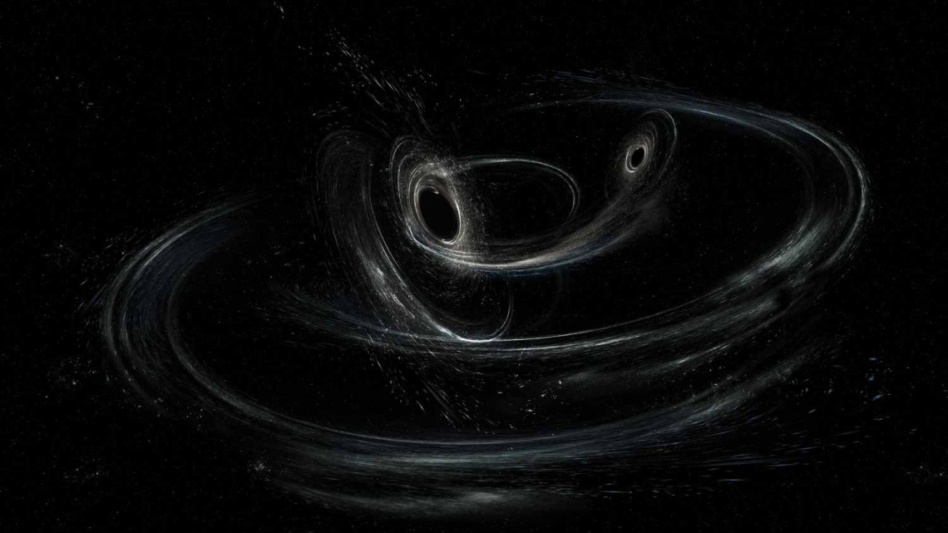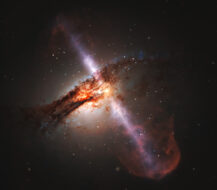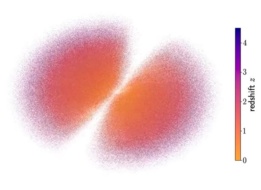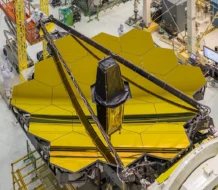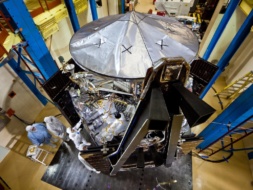Has Einstein ever been wrong?
A study published yesterday in Nature revealed the first direct observation of a phenomenon that the famed physicist described in his theory of general relativity. In a mid-collision pair of black holes, the Cardiff University researchers found the strongest evidence yet of a wobbling orbit caused by the distortion of space and time through intense gravity.
Of the pair of black holes found locked in this galactic dance, one struck the research team as unusual in their initial analysis. It’s about 40 times as massive as the Sun. It’s also spinning really, really fast—in fact, “maybe even as fast as physically possible according to our current understanding of physics,” Mark Hannam told Parallax. Hannam is a professor at Cardiff University’s Gravity Exploration Institute and lead author on the paper.
This rapid spin produces an effect in the back hole’s orbit that looks something like what happens to a spinning top when it’s knocked off-kilter. The whole plane of the binary black hole orbit begins to wobble, conserving angular momentum in the system—a phenomenon called precession.
Precession in a single object is well-documented (for example, Earth’s orbit precesses). We’ve even observed binary precession on a smaller scale in the orbits of binary neutron stars. But in those observations, the stars were farther apart and spinning more slowly, so it took ~300 years for the system to precess once.
“With the black holes, because they’re orbiting so close [together], and they’re going so fast, and they’re spinning much more rapidly, the effect is billions of times stronger,” Hannam said. “So these things actually precess a couple of times every second rather than taking hundreds of years.”

Scouring the sky
In remote pockets of Washington, Louisiana, and Italy are a set of massive instruments with arms up to four kilometers long, designed to search for subtle signals from massive, faraway celestial bodies. These instruments, the LIGO and Virgo detectors, search for gravitational waves, another component essential to—yep, you guessed it—Einstein’s theory of gravity.
The first gravitational waves were detected in 2015. In 2017, the discovery won researchers Rainer Weiss, Barry C. Barish, and Kip S. Thorne the Nobel Prize in Physics.
Since then, it’s been a waterfall effect of discovery after discovery.
“One day, binary black holes were just inconceivable,” Hannam said. “A couple of years later, it’s ‘Another binary black hole, whatever.’ And so now the excitement is in pulling out these features that we hadn’t seen yet.”
The LIGO and Virgo detectors have been shut down since the beginning of the COVID pandemic, and they’re currently being upgraded. When they’re switched back on, they’ll be far more sensitive than before, paving the way for bouts of new research and discoveries.
“The thing now really is in getting…hundreds and hundreds of signals, so we can do statistics to really understand the population of black holes in the universe,” Hannam said. “That tells us how they formed and then that, in turn, feeds into information about how galaxies form.”
